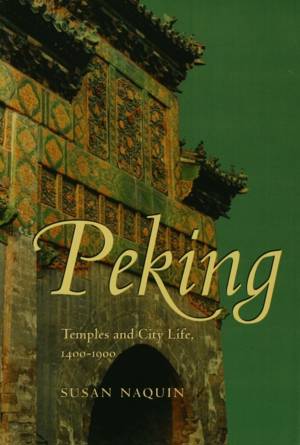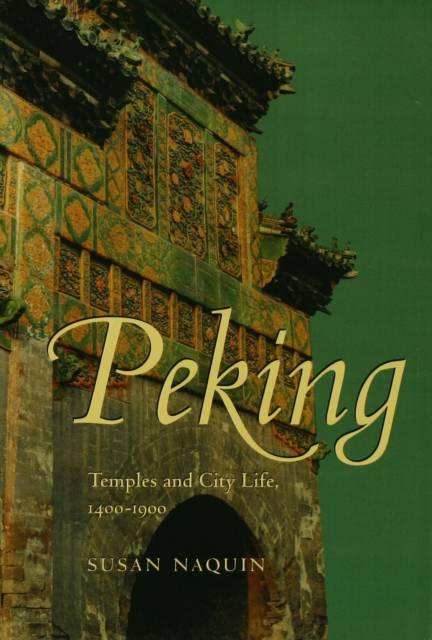
- Afhalen na 1 uur in een winkel met voorraad
- Gratis thuislevering in België vanaf € 30
- Ruim aanbod met 7 miljoen producten
- Afhalen na 1 uur in een winkel met voorraad
- Gratis thuislevering in België vanaf € 30
- Ruim aanbod met 7 miljoen producten
Zoeken
Omschrijving
The central character in Susan Naquin's extraordinary new book is the city of Peking during the Ming and Qing periods. Using the city's temples as her point of entry, Naquin carefully excavates Peking's varied public arenas, the city's transformation over five centuries, its human engagements, and its rich cultural imprint.
This study shows how modern Beijing's glittering image as China's great and ancient capital came into being and reveals the shifting identities of a much more complex past, one whose rich social and cultural history Naquin splendidly evokes. Temples, by providing a place where diverse groups could gather without the imprimatur of family or state, made possible a surprising assortment of community-building and identity-defining activities. By revealing how religious establishments of all kinds were used for fairs, markets, charity, tourism, politics, and leisured sociability, Naquin shows their decisive impact on Peking and, at the same time, illuminates their little-appreciated role in Chinese cities generally. Lacking most of the conventional sources for urban history, she has relied particularly on a trove of commemorative inscriptions that express ideas about the relationship between human beings and gods, about community service and public responsibility, about remembering and being remembered. The result is a book that will be essential reading in the field of Chinese studies for years to come.
This study shows how modern Beijing's glittering image as China's great and ancient capital came into being and reveals the shifting identities of a much more complex past, one whose rich social and cultural history Naquin splendidly evokes. Temples, by providing a place where diverse groups could gather without the imprimatur of family or state, made possible a surprising assortment of community-building and identity-defining activities. By revealing how religious establishments of all kinds were used for fairs, markets, charity, tourism, politics, and leisured sociability, Naquin shows their decisive impact on Peking and, at the same time, illuminates their little-appreciated role in Chinese cities generally. Lacking most of the conventional sources for urban history, she has relied particularly on a trove of commemorative inscriptions that express ideas about the relationship between human beings and gods, about community service and public responsibility, about remembering and being remembered. The result is a book that will be essential reading in the field of Chinese studies for years to come.
Specificaties
Betrokkenen
- Auteur(s):
- Uitgeverij:
Inhoud
- Aantal bladzijden:
- 850
- Taal:
- Engels
Eigenschappen
- Productcode (EAN):
- 9780520219915
- Verschijningsdatum:
- 15/01/2001
- Uitvoering:
- Hardcover
- Formaat:
- Genaaid
- Afmetingen:
- 168 mm x 235 mm
- Gewicht:
- 1274 g

Alleen bij Standaard Boekhandel
+ 356 punten op je klantenkaart van Standaard Boekhandel
Beoordelingen
We publiceren alleen reviews die voldoen aan de voorwaarden voor reviews. Bekijk onze voorwaarden voor reviews.








